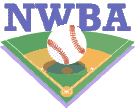There's as many throwing programs as there are instructors. Here are a few of them on the web that pretty much cover the whole spectrum of programs out there: Dick Mills, proponent of videotaping and game speed bullpen work and analysis of mechanics (He hates long toss) Jaeger Sports, long toss guru. Steven Ellis, Tuff Cuff and off season workouts schedules.(Very comprehensive) Paul Reddick, resistance and aerobic workouts and drills for improving mechanics.
Of all of these guys, I think I've gotten the most out of Mills' ideas and programs, although I can't say I agree completely with him on the long toss issue, but that's because my son, like yours, is also an OF. If he was juts a PO, then we probably would not long toss much.
Ellis' program is workout intensive. Reddick's is too. Mills is nuts and bolts mechanics stuff and is geared on teaching the player and the Dad how to be their own pitching instructor. What I like the most about his stuff is that he actually explains why you need to fix a mechanical fault and what the fault is causing to happen to the delivery and the pitch. Too many instructors out there are simply teaching the way they were taught with very little thought about whether its correct or even helpful to a particular player.
So I would say you need to research all the programs and come up with your own that matches your son's current level of development. My son is 13 and we don't do a lot of drills because his mechanics are pretty good and he has developed a good feel for what he is doing right and wrong to make adjustments. But we do do drills when we see things creep into his delivery that need to be corrected. The less developed or less feel a pitcher has for his delivery and mechanics, the more he might need drill work in my view.
We don't do a lot weight lifting, although I don't see how being stronger really hurts an athlete. But we do the Thrower's Ten for the shoulder and elbow often. We do a lot of Reddick's Super 7 and core work. We throw as much as we can and we videotape often. There is no way to effectively instruct pitching without videotaping and showing it to the player. So here's our workout that we started last week.
120 drill for warmups and daily throwing:
3 min at pitching distance, then
3 min at base distance, then
3 min at 1 1/2 times base distance,(or 2X base distance every other day), then
1 minute at pitching distance.
Bullpens at least 2-3x Week at game speed (100% max effort) something like this:
20 Fastballs (5 up an down on each side of the plate)
20 Changes (same way)
10 Offspeed (5 to each side of the plate)
Simulated inning up to 3 K's or 3 BB's.
(Some will say to alternate the pitches to simulate game throwing. I prefer to work on location rather than sequence, which you can do in simulated inning)
Thrower's ten (pick 5 to do daily)
Core work, resistance, aerobic on days between bullpens.
Drills when needed to fix mechanical faults that creep in from time to time.
1 day of no work.
The hardest part of doing all of this is finding the time. Don't expect your player to do it on his own. Do you like to work out by yourself? neither do they. Get them to find a friend and throw the 120 every day when they get off the bus. They can do that with bullpens too. Or do the Bullpens on Sat/Sun.
Do the workout stuff either in the evening or early in the morning. You can do the thrower's ten between commercials while you watch TV. Work stuff into the daily routine. My kid seems to always forget to put his dishes in the dishwasher, so he does 15 push ups every time he forgets. Shoes dropped in the middle of the house? 20 jumping jacks with a shoe in each hand. Forgot to make your bed this morning? 10 leg lifts off the edge of the bed after you make it.
Videotape at least once a week and sit down and go over it with them. You don't need a lot of knowledge and expertise to figure out what they are doing wrong when you watch it in slow motion. Its obvious.
If all I had was $75-80 to spend, I would buy Mills' DVD set on how to videotape and identify mechanical faults. Velocity comes from the lower body and is transferred to the arm with efficient mechanics. Accuracy comes from proper mechanics. Mechanics and pitching is a sequenced movement. If there is a fault in any of the sequence, it will affect the rest of the sequence that follows. Fix the things that are wrong early in the sequence, and usually the things that are wrong later in the sequence go away too.
If you can't do very much because of time, work or lack of a mound, at least start throwing as much as possible. Arms need to be conditioned to throw and if you don't condition it, you're going to have sore arm by the second day of HS tryouts, and your after the first Travel practice.
|




